Ferment Foods in Small Batches
Ferment food in small batches for a versatile method of home preservation! This is very helpful for homesteaders, foodies, and anyone who wants to preserve small harvests of veggies and fruits.
Lacto-fermentation adds probiotics to your foods and increases the availability of nutrients. It’s also a method of food preservation that requires no electricity, refrigeration, or cooking.
Using a one-quart mason jar fermenter (#ad) is a great way to preserve the harvest from a small garden!
This post contains affiliate and referral links and advertising as a means to earn income. You won’t pay any extra but I may earn a small commission on qualifying purchases. As an Amazon affiliate, I may earn a commission on qualifying purchases. See my disclosures.
A Great Way to Preserve Your Harvest
- Increase the nutritional content of your veggies
- Keep food without refrigeration
- Easy method of food preservation
- Great for off-grid living
- Age-old homesteading skill
Lacto-fermenting is the process by which beneficial lactobacilli alter vegetable matter, preserving it and making it easier to digest. These Lacto-fermented foods are reputed to have more available vitamins, enzymes, antibiotics, and cancer-fighting compounds than the raw foods they were made from.

Small Batch Versatility
Sometimes I ferment food in a large crock, then transfer it to mason jars stored in my refrigerator. My grandmother used the same method to make pickles in her old ceramic crocks. I love having a big batch of pickles ‘curing’ on the counter in the summer…it makes me think of my Gram.
There are pros and cons to fermenting food in large crocks. If you have a large family, or you eat a lot of fermented vegetables, the crock is a great way to preserve it in big batches. It’s also pretty cool to use the same vessel used by our ancestors.
However, our family of three doesn’t go through enough lacto-fermented pickles, sauerkraut, and other veggies to make this the best method for us. It’s also very nice to have the ability to make small batches of several different recipes at the same time without having big crocks sitting all over the kitchen, basement, or root cellar.
How to Ferment Food in Small Batches
To create small batches of Lacto-fermented foods, you will need:
- non-reactive containers
- non-iodized salt
- food to ferment
- a weight to keep food submerged
- cheesecloth, plastic wrap, or a weight, lid, and airlock system to keep your ferment clean
Most recipes will call for prepared vegetables (shredded, chopped, sliced, or pounded), non-iodized salt, spices, and possibly water and vinegar. In some recipes, the brine will be created by mixing the salt with the prepared vegetables, then mixing and mashing the food to extract the natural juices. Sauerkraut is one such recipe.
Brine Cured Dilly Beans and How to Make Brine Cured Pickles are 2 of my favorite recipes.
Other recipes will call for a brine solution made with water and salt, and possibly vinegar. My brine-cured pickles are made this way. Once you have your produce ready, you’ll need an appropriate container to keep them clean and submerged in the brine until they are ready to eat.

I’ve made pickles and other Lacto-fermented vegetables using a glass bowl, plate, plastic wrap, and sea salt. If you have a non-reactive container and some plastic wrap, you can get started on this project today!
Be aware that the brine may drip onto your counter and the ferment needs to be checked often to make sure the veggies aren’t floating to the top. As long as you pay attention, this is an inexpensive way to start fermenting small batches of your harvest right away.
You can also create a system from your own canning jars, an airlock from a homebrewing store, a rubber gasket, a canning lid with a hole punched for the airlock and gasket, a screw band, and a weight to hold the food under the brine solution.
You can see the basic setup in my photo of Spicy Carrot-Kraut, which I used in a fermentation system from a company called Fermentools. This method of fermenting is pretty simple to set up and needs very little attention once the airlock is in place. (I received a free kit from them to review. All opinions are my own.)
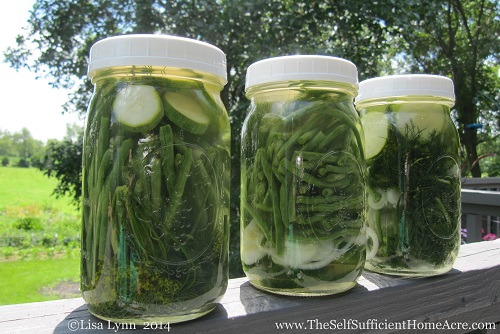
Helpful Hints for Fermenting Foods at Home
There are lots of recipes online now for home-fermented veggies. Be sure that you follow the recipe and remember the following tips for a successful fermentation:
- Use non-iodized salt. Iodine kills bacteria.
- Keep it in the dark. Sunshine kills bacteria.
- Different kinds of salt have different weights per volume. You may wish to buy a food scale for accuracy. (Some recipes use grams, percents, or specific volumes of salt for their recipes.)
- Very cold temps slow the growth of lactobacilli.
- Keep it submerged – food that comes into contact with the air can spoil.
- Use non-reactive materials – to prevent off-flavors.
- Don’t use your fingers – use a spoon to remove food from fermenting to check on its progress.
- If it smells rancid or the food is slimy, toss it out!
- For larger batches, use a ceramic crock (#ad)
This post contains affiliate and referral links and advertising as a means to earn income. You won’t pay any extra but I may earn a small commission on qualifying purchases. As an Amazon affiliate, I may earn a commission on qualifying purchases. See my disclosures.
Once you learn to ferment your own pickles, sauerkraut, and kimchee you’ll have trouble stopping!
Do you ferment food? Do you have a system that you use? What is your favorite recipe?
Disclaimer: I received products to review and to give away from Fermentools.
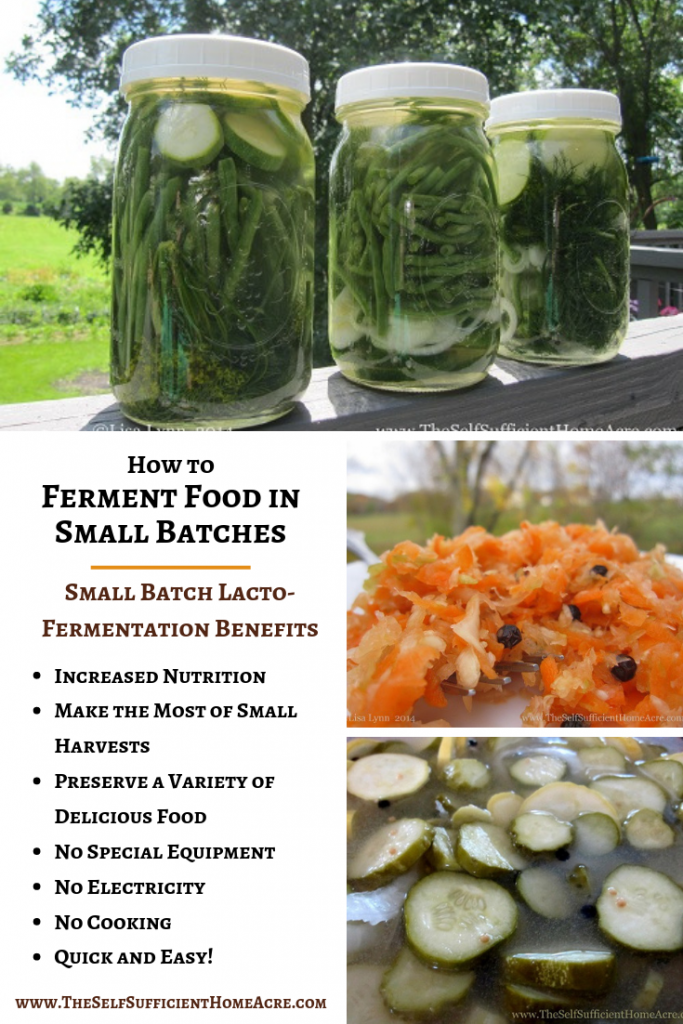

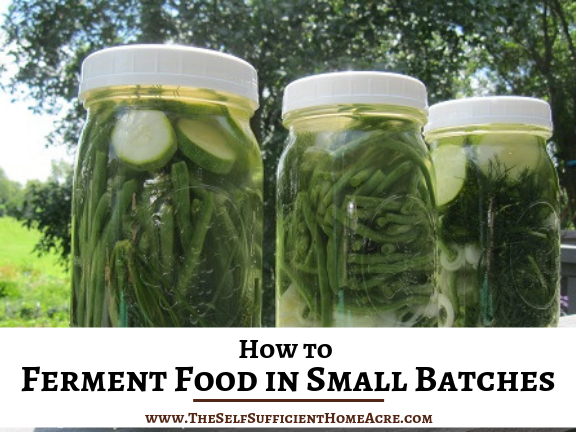
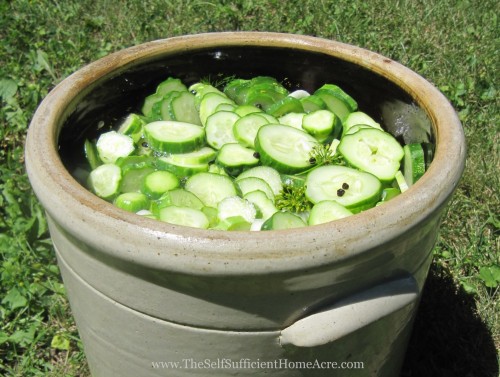
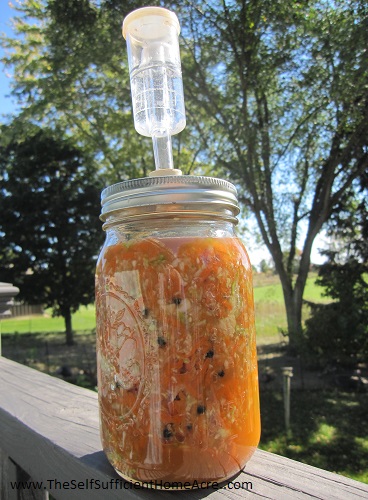

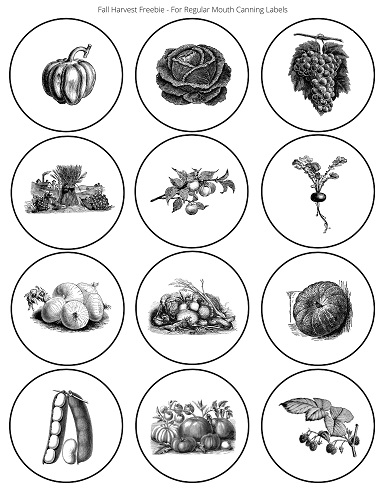
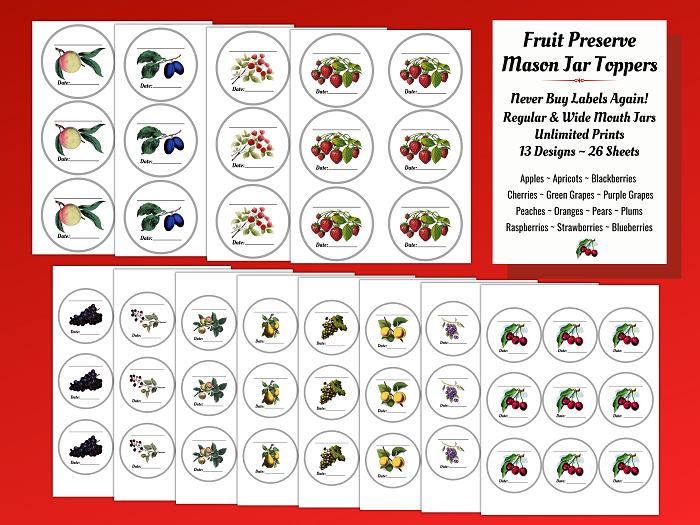


So.. I have been lacto fermenting every vegetable I can find the past few months and I was wondering if I can add new vegetables to old? If I have chard/collard stems in the cabinet for a week.. and they break down a bit… can I add new stems? Or would this completely mess up the process?
Thank you!!!
Hi Janis,
I do it all the time and haven’t had any issues. If the brine solution starts to taste weak…then it’s time to start fresh. Best wishes!
I just received a fermenting crock for Christmas and am so excited to get started! It is a 3 gallon crock. Is it possible to make small batches in a large crock? Thanks!!
Congrats on your new crock, Amy! You could try using the crock for fermenting smaller batches…I haven’t but I think it is possible. You will need to have enough food and brine solution to cover the bottom of the crock and bring the level up high enough so that you can see what’s going on in there. 🙂 You could make more brine solution to fill the crock up a bit if necessary. You can also make small batches in jars.
You share the best articles. I have seen fermented recipes in canning books and it seemed like such a long messy job. I have never tried it but I will now. Do you have some good recipes you can share? Maybe pickles and sauerkraut? Thank you.
Thank you, Terry! At the top of the post I shared links to two different pickling recipes and next weekend I will be sharing a recipe for Spicy Carrot-Kraut. 🙂 I hope you like them!
I’ve always thought I could never get into the whole fermenting thing so I’ve never checked it out. This post woke me up to the fact that I’ve been “fermenting” pickles for 40 years. We just called them open jar pickles. They are wonderful! I’ve also been making sauerkraut as well. We just didn’t have a particular name for this type of preservation!! I feel a little silly!! LOL!!!
That’s funny, Nina 😉 I didn’t realize I was fermenting until a couple years ago, when I was making my ‘brine cured pickles.’ So I can relate! Thanks for stopping by 🙂
I started using the Perfect Pickler that works with any wide mouth canning jar. It was being sold with the canning supplies at my local farm and feed store. The small recipe booklet has a great recipe for salsa starter using peppers (add fresh tomato to serve). I’ve also been pleased with fermented daikon radish and carrots for sandwiches. Making a second batch of salsa starter. Have a quart jar of fermented green cherry tomatoes that I might use instead of olives in recipes. Unfortunately, my husband does not care for pickles so small batch is great for me. It’s easy to ferment food but harder to learn to use in recipes or eat. Need to get into the habit since fermented food is good for our health.
Hi Donna,
I haven’t used the Perfect Pickler…sounds interesting 🙂 The salsa, radish and carrots sound yummy! I’m the one who eats the most pickles around here too and you’re right, small batches are great when you only have one person eating them! Thanks for sharing!